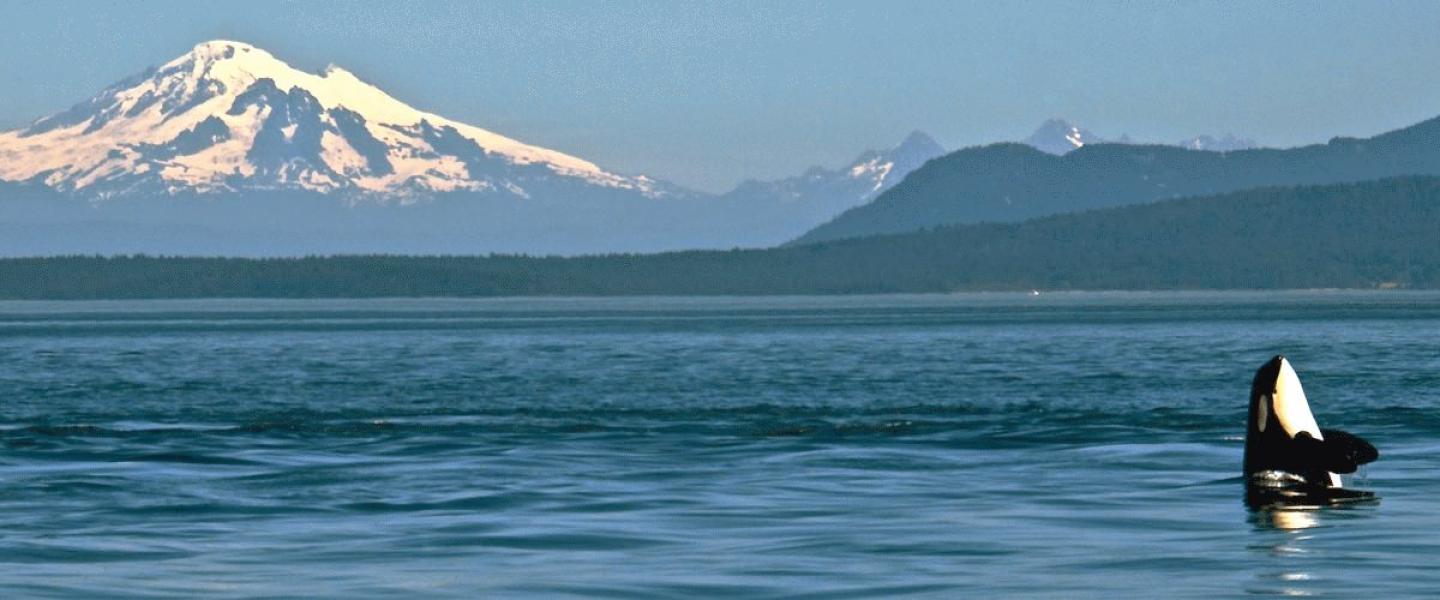
Have you had the opportunity to go whale watching in the San Juan Islands? Chances are, if you have and were able to spot some of our beloved Southern Residents, you've heard the naturalists call them by name. How in the world are they able to tell these beautiful creatures apart from one another? They are all black and white! Yes, true, but they also have their very own version of an orca fingerprint! We're able to identify and distinguish our 83 Southern Residents based on their dorsal fins and saddle patches, those big white markings behind the dorsal fin on their back. Some have open saddles, some have closed, meaning that they may or may not have black markings within their saddle patches. Sometimes their dorsal fins have notches or scars. They have variations in shape and height. All of these characteristics provide clues into which whales we are looking at.
Sometimes we try to simplify things and identify the adult males first. Why would we do this? Adult males can have up to a 6 foot tall dorsal fin, which is huge! When we see that slicing through the water, we can usually determine which male we're looking at, and it's a lot easier than sorting through the options for females and juvenile males because we've only got a handful of adult males in the Southern Resident population. If we can identify him, we can consult our catalog and figure out who his pod members are. Those male dorsals definitely stand out.
So that's really all there is too it! There certainly are naturalists who have been doing this for many seasons who can identify these whales solely based on eyesight. Many others utilize cameras and zoom lenses and then match photographs of the dorsals and saddle patches with those in the catalog. Either way, it's a wonderful, non-invasive tool that we can use to keep tabs on our residents. We've used photo-identification since the 1970's, when Michael Biggs was commissioned to get a population count of orcas in the area. Since that time, we've used this to keep track of births and deaths, family relations, and various behaviors and pod characteristics.
Want to try your hand at identifying orcas yourself? Come out on a whale watch and see what it's all about!